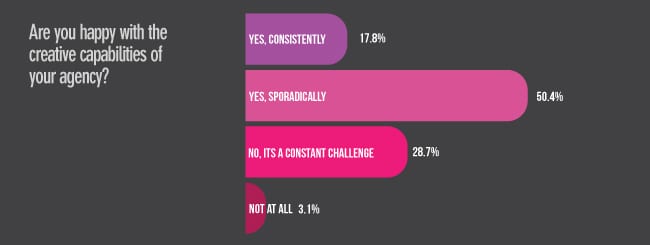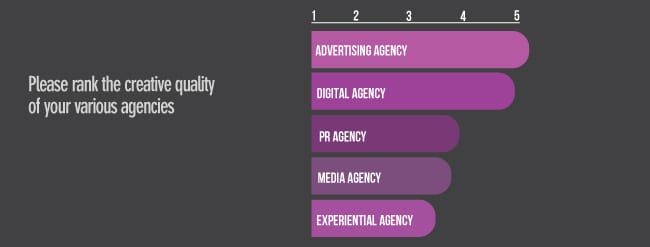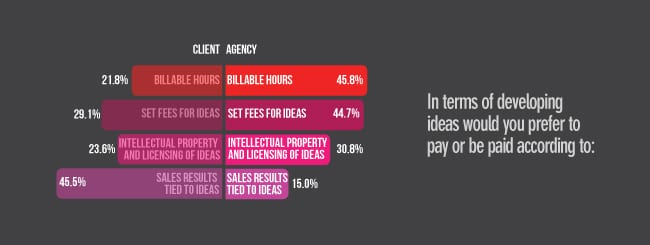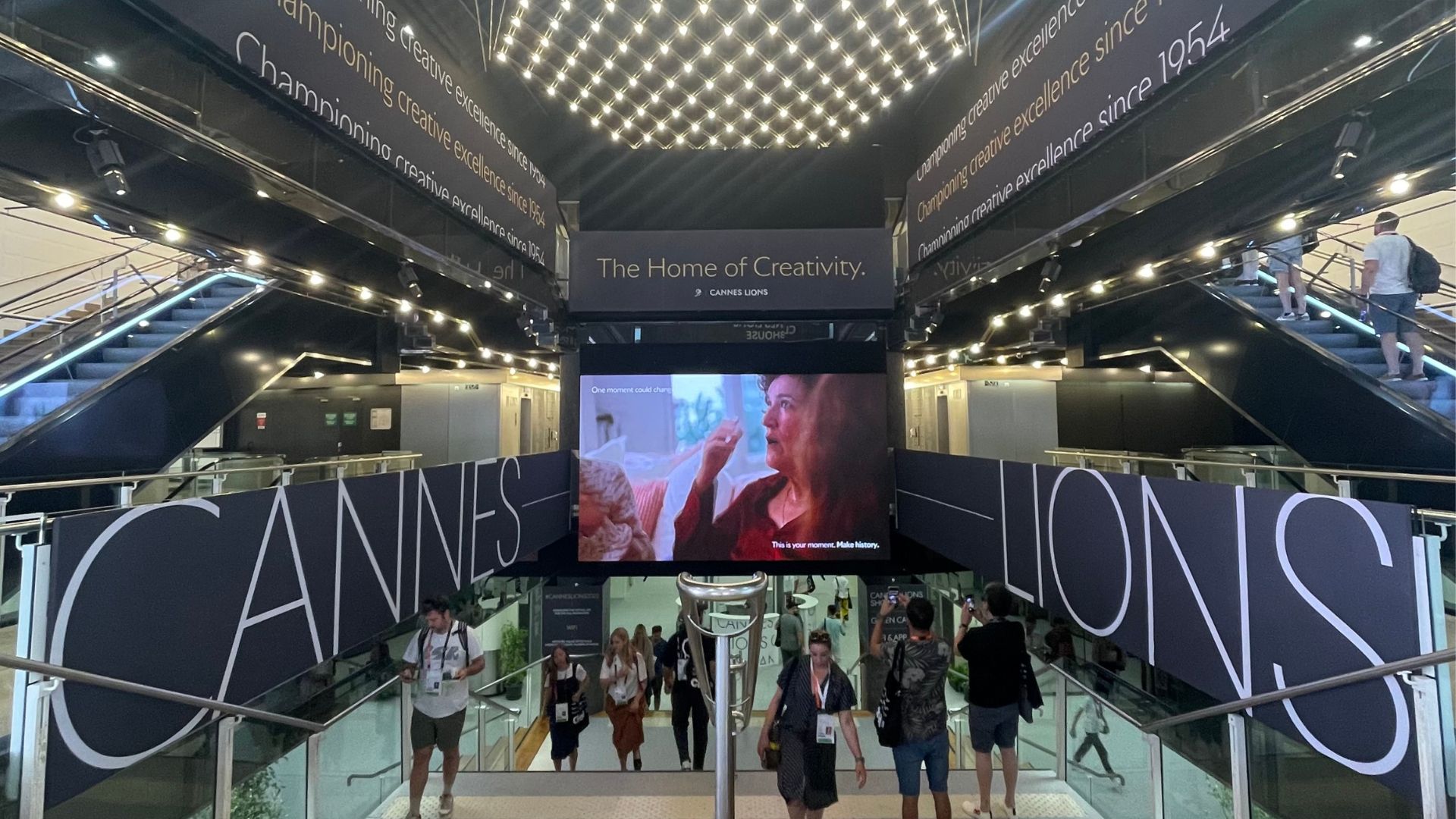The 2013 edition of the landmark Creativity In PR study reveals that creativity is critical to how businesses perceive PR value, even as the PR industry struggles to find a business model that can help it genuinely prove its creative capabilities.
The Creativity in PR report is co-authored by the Holmes Report and creativity experts NowGoCreate, in partnership with Ketchum, based on a survey of 600 PR people from more than 35 countries across the world.
Polling took place earlier this year, after the inaugural edition of the study was released in 2012. Once again, respondents came from agency and in-house, across a range of industries and sectors, in a bid to explore whether the PR industry is creative enough to successfully sway marketing budgets and develop game-changing ideas on a consistent basis.
They answered a variety of questions during the two months the survey ran during the summer of 2012, focusing on attitudes towards creativity; tools and skills; opportunities and challenges; and suggestions and advice. A free PDF of the report can be downloaded here or viewed at the end of this story.
Business Value
This year’s headline finding reveals that creativity is becoming an increasingly critical element in how businesses perceive PR value. In-house respondents were asked how important creativity is to their decisions to hire and retain an agency. The results demonstrate the premium that businesses now place on creativity in PR, with more than three-quarters (79%) rating it as 8 or higher out of 10, compared to two-thirds last year. Almost half (47%) scored it as 9 or more, while more than one in five (22%) gave it full marks for importance, both significant increases on the 2012 results.
 The findings belie the notion that creativity in PR is a luxury. Instead they demonstrate, once and for all, the indelible importance attached to creativity by in-house marketers and communicators as a genuine business priority.
The findings belie the notion that creativity in PR is a luxury. Instead they demonstrate, once and for all, the indelible importance attached to creativity by in-house marketers and communicators as a genuine business priority.
Geographically, buyers of agency services in Asia and Europe are less concerned about creativity than their counterparts around the world. Predictably, creativity is a more important commodity in the UK (87%) and US (84%), according to the proportion of clients that rate it as 8 or higher out of 10. But there are surprises elsewhere. Australia, famed for award-winning creative PR campaigns, is only average, while Latin America and the Middle East score higher than Asia and Europe.
PR Firms Struggle to Prove Creative Worth
 42% of clients are more likely to approach their PR agencies for big creative ideas today than they were 12 months ago. The remaining 58% either said no or said there has been no change.
42% of clients are more likely to approach their PR agencies for big creative ideas today than they were 12 months ago. The remaining 58% either said no or said there has been no change.
Where do PR Firms Rank?
 The results suggest one of two things. First, that the creative gap between the PR world and adland may not be quite as big as anyone thinks or, second, that PR scored higher because the survey was undertaken by more comms directors than senior marketers.
The results suggest one of two things. First, that the creative gap between the PR world and adland may not be quite as big as anyone thinks or, second, that PR scored higher because the survey was undertaken by more comms directors than senior marketers.
Heather Mitchell, head of global PR and social media for Unilever hair care, points out that agencies must be “proactive” and “bring new thinking” to clients “in an opportunistic fashion”, rather than waiting for permission.
“Creativity is not only critical to selling in ideas to clients and helping prove the value of PR and its efficiency versus other channels, but ultimately what it will take to break through the clutter and get the attention of consumers in an increasingly more competitive marketplace,” adds Mitchell. “To me the solution to getting agencies to deliver more creative thinking is to remind and reinforce that there is always money for a good idea.”
Getting paid
A new question in this year’s survey addresses one of the fundamental issues that affects creativity. How exactly should agencies be reimbursed for their ideas? This question was put to both clients and agency people, revealing a disturbing dichotomy between each side.
 Agencies would rather stick to billable hours (46%) with slightly less also favouring set fees for ideas (45%), despite adland’s signal failure on the latter count. Clients — demonstrating more innovation than they are perhaps known for — would prefer to pay agencies based on sales results tied to ideas (46%). Just 22% of clients like billable hours and not too many are convinced of the merits of set fees for ideas (29%) or IP/licensing ideas (24%).
Agencies would rather stick to billable hours (46%) with slightly less also favouring set fees for ideas (45%), despite adland’s signal failure on the latter count. Clients — demonstrating more innovation than they are perhaps known for — would prefer to pay agencies based on sales results tied to ideas (46%). Just 22% of clients like billable hours and not too many are convinced of the merits of set fees for ideas (29%) or IP/licensing ideas (24%).
The findings would appear to confirm that a more innovative approach to funding would help encourage idea development and overall creativity. Put more simply, it appears that agencies need to work harder to find common ground with clients that are searching for more creative PR work.
“There’s a simmering frustration running through the survey responses – we’re as good as any other part of the marketing mix – why are we not recognized for our creative chops?” notes NowGoCreate founder and study co-author Claire Bridges. “In-house teams face different creative challenges from agencies – often small teams, repetitive problems, corporate risk-aversion, multiple internal stakeholders to sell ideas to.”
“We need the collective confidence in our creative abilities (like our ad agency brethren) to ask for better briefs, more face time, better insight, more time. Then and only then will be the creative divide between what clients want and what agencies can deliver be bridged.”
“This year’s survey confirms our worst suspicions; even the PR campaigns winning creativity awards are not as creative as we tell ourselves,” says Karen Strauss, chief strategy and creativity director at Ketchum. “We still leap too quickly and blindly into solving a company’s problem instead of focusing on meeting a customer need or solving a customer problem.”
“Who can deny that too many brainstorms start by asking how we can creatively sell a product or brand benefit rather than how we might zero in on audience needs and build from there? And we still limit ourselves as an industry by thinking our creative mission is to purely earn media attention. It’s so much more. Our job is to find creative solutions at the intersection between product and cultural truths. Only then will we achieve our creative potential.”
This post was original published on the HolmesReport.com.


